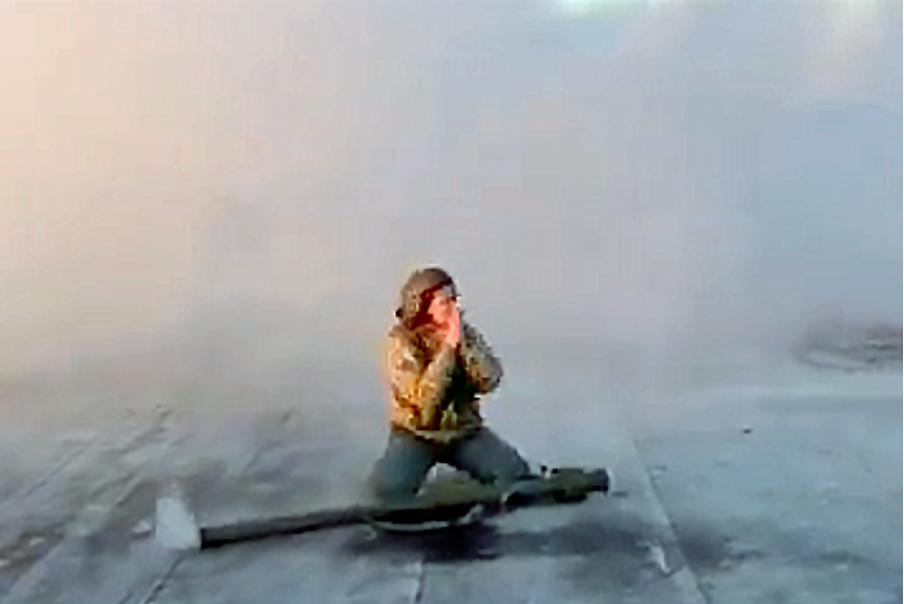CNN journalists spent two days with a secret unit of Ukraine’s Main Directorate of Intelligence (HUR) responsible for launching the long-range AN-196 Lyutyi drones into Russia. They witnessed the launch of the Ukrainian drone towards targets near Kotluban, Volgograd region.
The American journalists showed how this unit operates the drones, which recently struck a depot in Russia where Iranian missiles were stored.
JOIN US ON TELEGRAM
Follow our coverage of the war on the @Kyivpost_official.
According to information from HUR specialists, the target of the operation was wagons loaded with Iranian missiles located at a depot near the village of Kotluban. The distance to the target from the launch site was in excess of 600 kilometers (375 miles).
HUR operators with the call signs “Serzh” and “Vector” explained that route planning for the drones takes place in a secret location. They say Lyutyi can be programmed with over a thousand different waypoints to avoid Russian air defenses. Smaller Rubaka kamikaze drones play a crucial role in the success of the reconnaissance missions by suppressing air defenses and diverting Russian fire from Lyutyi.
Pilots launch the drone and ensure a smooth takeoff. Once airborne, the drone follows pre-programmed routes.
“Serzh” says he has personally controlled over 500 attacks using long-range drones on Russian territory since the full-scale invasion of Ukraine in February 2022.

QUIZ: Do You Know Who Will Lead Trump’s New Foreign Policy Team?
According to CNN’s report, the unit launched over 100 drones into Russia on the night of Sept. 29. About 30 percent of these drones performed diversionary tasks, programmed to fly distances ranging from 280 to 340 kilometers (175 to 212 miles).
To “spoof” Russian radar, strips of metal foil are attached to the wings of drones. “Vector” noted that their drone strikes were exclusively targeted against military objects.
⚡️CNN for the first time demonstrated the operation of the Ukrainian long-range "Lyuty" drones, which are launched by the GUR unit.
— BLYSKAVKA (@blyskavka_ua) October 16, 2024
Such drones attacked a warehouse in a russian pit where Iranian missiles were stored.
"Furious" are programmed for more than a thousand waypoints… pic.twitter.com/2aeA3MHBK8
Ukrainian intelligence officers explained that the success of the mission is tracked in three main ways: through ground intelligence, messages posted in Russian Telegram groups, and later, through satellite technology analysis. Only after assessing all three methods is a conclusion drawn about the success of the mission.
The operators confirmed that the mission to destroy Iranian-supplied missiles was successful.
According to CNN, Ukraine has already launched over 7,000 drone strikes against Russian territory in 2024, with the farthest strike reaching over 1,700 kilometers (1,062 miles) from the Ukrainian border.
The development of the Lyutyi drone was first publicly announced by the Ukrainian state defense enterprise “Ukroboronprom” in October 2022. The agency stated its intention to create an attack drone weighing over 200 kilograms (440 pounds) with a 75-kilogram (165-pound) warhead and a range of more than 1,000 kilometers (625 miles).
BBC News Ukraine reported that the Lyutyi drone was first launched into Russian territory in May 2023, with serial production beginning at the end of the summer. A source in the Ukrainian government involved in the drone’s development told journalists that Lyutyi is a unique analogue of the Iranian Shahed kamikaze drone. It has high jamming resistance and is capable of changing altitude during flight depending on the terrain.
The capability of Ukraine’s Liutyi (fierce) long-range strike UAV has been proven by a series of successful attacks on Russian oil refineries, fuel depots, helicopter bases and other strategic facilities in Sochi, Adler, St. Petersburg, Novolipetsk, Ryazan, Nizhniy Novgorod and Tatarstan.
In terms of design and appearance, the Liutiy resembles the Turkish Bayraktar-TB2, having a similar fuselage and tail assembly which ensure excellent aerodynamic performance and low fuel consumption.
Constructed of light materials, mostly fiberglass, the Liutyi normally carries a nominal 50-kilogram (110 pounds) warhead which can be increased to 75 kilograms (165 pounds), though its range would be reduced to less than 800 kilometers (500 miles). The Liutyi is also convenient to transport, being composed of separate modules which can be easily reassembled.
You can also highlight the text and press Ctrl + Enter






